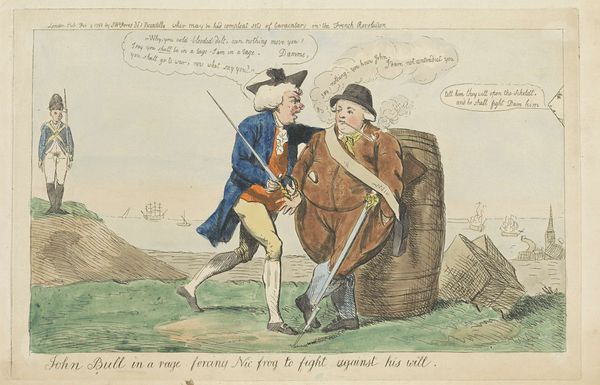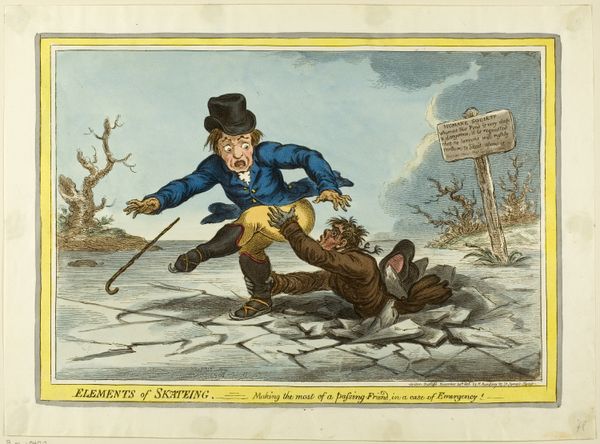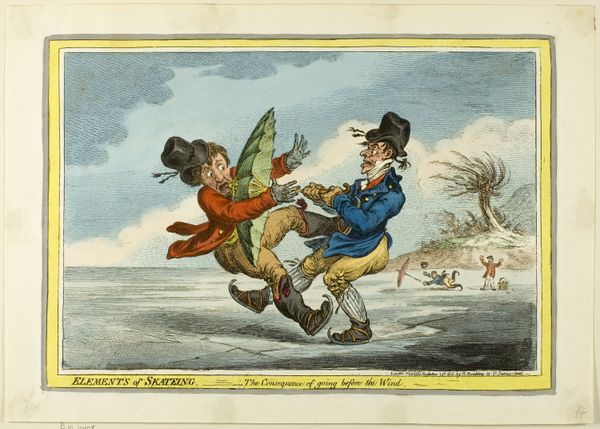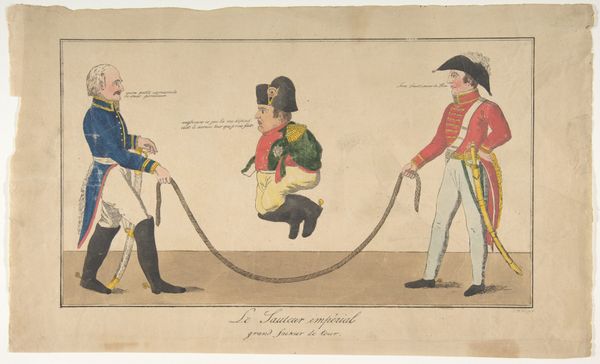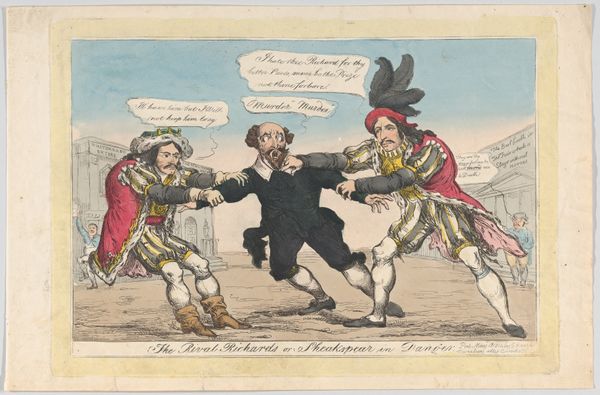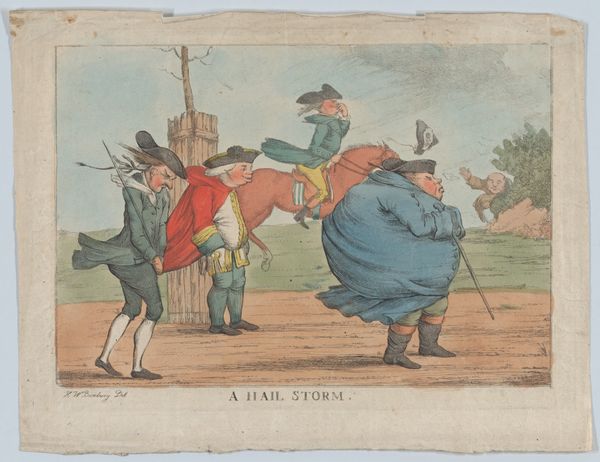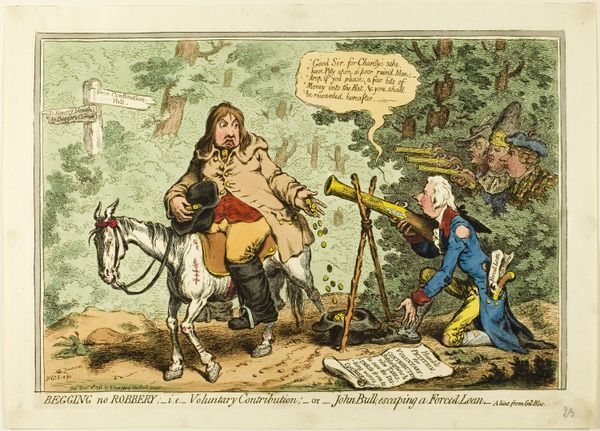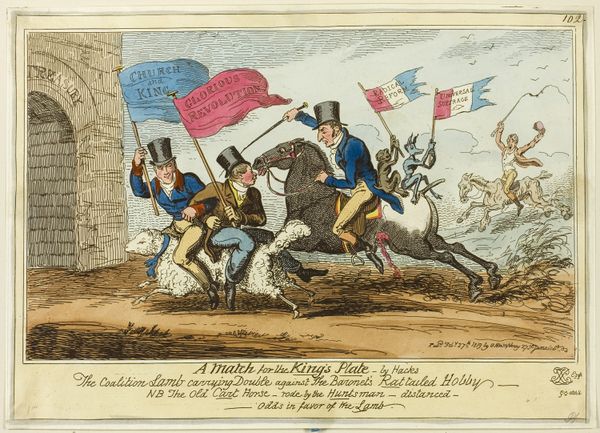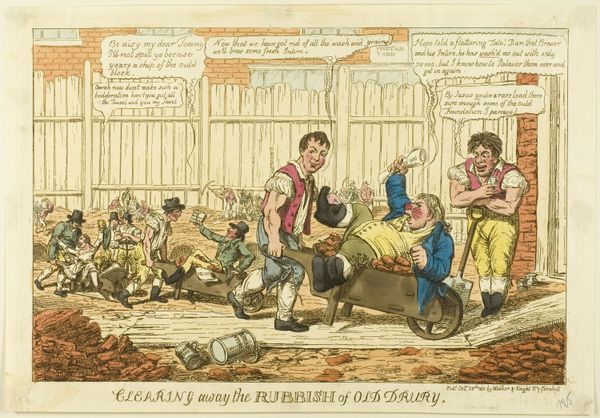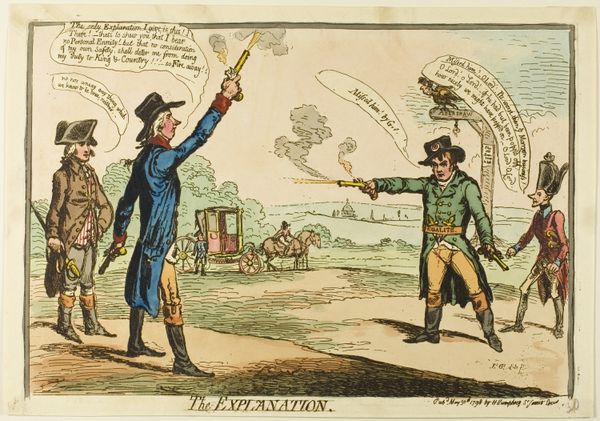
The Siege of Namur by Captain Shandy and Corporal Trim (Tristram Shandy) 1800 - 1820
0:00
0:00
drawing, print
#
drawing
# print
#
caricature
#
personal sketchbook
#
romanticism
#
men
#
genre-painting
#
history-painting
#
watercolor
Dimensions: Sheet (trimmed): 9 7/16 × 13 3/8 in. (24 × 34 cm)
Copyright: Public Domain
Editor: So, here we have "The Siege of Namur by Captain Shandy and Corporal Trim," a print made sometime between 1800 and 1820 by Henry William Bunbury. It looks like a watercolor drawing, maybe even a caricature? I'm struck by how playful it seems despite the war imagery. What can you tell me about this work? Curator: Looking at Bunbury's piece through a materialist lens, consider the means of production: printmaking, specifically etching and watercolor washes. These are easily reproducible techniques, making the imagery accessible. Does this ease of reproduction democratize the commentary within, dispersing its critique to a wider audience beyond elite art patrons? Note the materials themselves – the paper, the inks, the pigments. Were they readily available? How would that affect Bunbury's ability to create such work, and who did it target? Editor: That’s interesting. So, you're suggesting we consider the socioeconomic conditions surrounding its creation? How does that apply here? Curator: Exactly! The print likely served a function as both art and commentary within a specific social milieu. We see this in the figures depicted; the officers, and implied by their postures, the laborers and soldiers, involved in the actual ‘siege’ that forms their role-play scenario. The application of watercolor allows for a broad distribution of similar (though never exactly matching) versions, connecting the work to evolving consumer tastes of the time. Consider what's being depicted as well – military life and a ‘siege’. Who did such imagery serve, and in what ways does it implicate consumption patterns around warfare and military service in England? Editor: So, the accessibility of the materials and reproduction impacts its cultural purpose. I hadn't thought about it that way. Curator: Indeed. It shifts the focus from just artistic skill to how that skill is used within the material conditions of its time. Editor: Okay, that gives me a lot to consider about Bunbury's approach and its role within early 19th century British culture. Thanks!
Comments
No comments
Be the first to comment and join the conversation on the ultimate creative platform.

